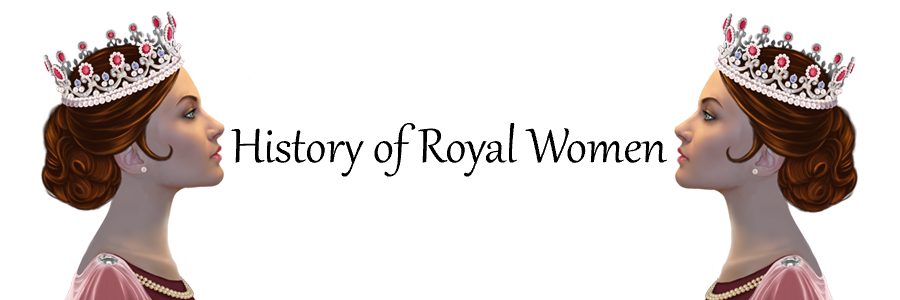
The future Queen Sālote had been a healthy child.
There were no reports of any ill health until she began her childbearing years. She had some tearing during her first childbirth that led to the problems, which she believed had caused her three miscarriages. By the 1930s, she felt generally unwell. She was examined at home by Dr Olive Wood, who told her that she may have cancer and to seek medical advice in Australia. The doctors in Sydney eventually concurred with Dr Wood’s diagnosis of cancer. On 22 August 1935, Queen Sālote underwent a hysterectomy performed by Dr Olive Wood’s sister, Dr Susie O’Reilly. Sālote was grateful for the care she received and declared, “My empty cup is full to overflowing.”1 She spent a month in the hospital and convalesced at the home of Reverend and Mrs J.W. Burton in Haberfield.
Six months after she returned home, Sālote lost her second son, Prince Uiliami Tuku‘aho, at the age of 16. Queen Sālote was devastated by grief, and she was exhausted after months of caring for him in his illness. Her doctors advised her to take a trip to Australia for medical care and rest. She and her husband travelled to Sydney together, where they would remain for four months. She had suffered a mental breakdown and received help from Dr William Page, a psychiatrist.2 They returned home in early October.
During the Second World War, Sālote suffered the loss of her husband, who had died quite suddenly of a heart attack in 1941. Sālote herself made it through the war without any medical crises. In 1945, she had a minor operation in Auckland, which may have been the removal of her tonsils.3 She travelled to Auckland again in 1947 for medical advice. “Her Majesty has been unwell for the last few months, and has been ordered a complete rest by the Chief Medical Officer, who has advised her also to avoid as far as possible all official ceremonies and functions”, wrote Consul C.W.T. Johnson in October 1947.4 She had all of her teeth removed, a common remedy for infection.5
In the mid-1950s, Sālote was diagnosed with diabetes mellitus.6 She would need to be monitored carefully, watch her diet and inject herself with insulin. At the time, not many people knew of her diagnosis.7 After her diagnosis, she often took longer periods of rest from her duties.
The Chief Medical Officer advised her to hire a full-time nurse, but she did not do this until 1964, when her eyesight deteriorated, and she had lost weight. At the end of 1964, she cut her hair and the following month, she left Tonga for Auckland. Shortly after, she was diagnosed with cancer of the bone and lungs. In April, she had lumps and a nail removed, and she had deep-ray treatment. However, it soon became clear that little more could be done. She returned to Tonga on 15 May, looking much thinner and walking with a stick. She lived briefly at the Royal Palace, but in July, she moved in with her younger son and his wife as their home was easier to navigate with a wheelchair. At the end of the month, the county celebrated that she had surpassed the reign of her ancestor, King George Tupou I. She returned home to the palace for that day and waved to the schoolchildren who marched through the grounds.8
Her sons urged her to return to New Zealand for treatment. On 19 October, she returned to the palace one last time. Three days later, Queen Elizabeth II appointed her Grand Commander of the Order of St Michael and St George, making her the first woman in the British Empire to receive this honour. On 31 October, she received the Sacrament of the Lord’s Supper.9
On 4 November, Sālote travelled to Fiji on an aircraft specifically requested by Queen Elizabeth II from the government of New Zealand. Another plane, another request from Queen Elizabeth II from the British Government, took her to Auckland. Once there, she underwent more deep-ray treatment, but it proved ineffective. The family began to gather around her. She collapsed on 12 December and was brought to the Aotea Hospital.10
She died at 12.15 a.m. on the morning of 16 December 1965 from cancer.
- Queen Sālote of Tonga: The Story of an Era 1900–1965 by Elizabeth Wood-Ellem p.162
- Sālote: Queen of Paradise by Margaret Hixon p.105
- Queen Sālote of Tonga: The Story of an Era 1900–1965 by Elizabeth Wood-Ellem p.285
- Sālote: Queen of Paradise by Margaret Hixon p.134
- Queen Sālote of Tonga: The Story of an Era 1900–1965 by Elizabeth Wood-Ellem p.234
- Queen Sālote of Tonga: The Story of an Era 1900–1965 by Elizabeth Wood-Ellem p.288
- Sālote: Queen of Paradise by Margaret Hixon p.134
- Queen Sālote of Tonga: The Story of an Era 1900–1965 by Elizabeth Wood-Ellem p.288-289
- Queen Sālote of Tonga: The Story of an Era 1900–1965 by Elizabeth Wood-Ellem p.289
- Queen Sālote of Tonga: The Story of an Era 1900–1965 by Elizabeth Wood-Ellem p.290

Be the first to comment